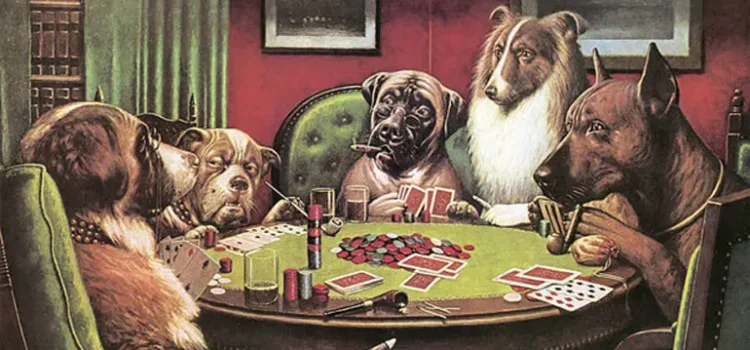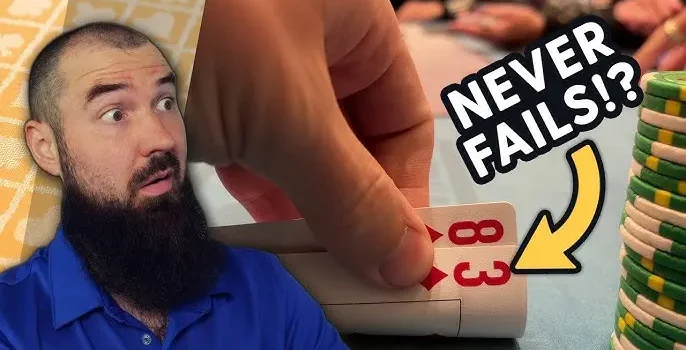
Poker is an exciting game that requires a mix of skill, strategy, and psychology. While it may appear straightforward at first, new players often make several critical mistakes that can severely hamper their progress. These mistakes, often rooted in impatience or misunderstanding of the game’s fundamental concepts, are common among those just starting out. In this article, we will delve into some of the most significant errors made by poker beginners, providing insight on how to avoid them.
1. Misusing Starting Hand Charts
Starting hand charts are a valuable tool for new players. They help simplify the game by narrowing down the playable hands in specific positions. For beginners, using these charts can ease the decision-making process by providing a set of guidelines to follow when deciding which hands to play. However, blindly adhering to these charts can become a major mistake.
Many novice players, including myself in my early days, rigidly followed hand charts without adjusting for the dynamics of the table. Poker is a dynamic game, and while hand charts are a great starting point, they shouldn’t be treated as unchangeable rules. For example, a chart might suggest opening a small pair from the middle position, but if there are large stacks behind you, it might be wiser to fold. The key is flexibility and recognizing when the situation calls for deviation from the chart.
2. Treating Every Opponent the Same
Another common mistake that can seriously hurt a beginner’s chances at success is treating every opponent the same. In poker, each player has their own unique style, and it is essential to adjust your play based on the tendencies of those around you. Early in my poker journey, I focused too much on the strength of my hand and not enough on my opponents’ strategies. This led to poor decisions because I didn’t consider the specific weaknesses and strengths of the players at my table.
When playing, always observe your opponents. Are they aggressive or passive? Do they fold often, or do they play a wide range of hands? Recognizing these patterns can significantly improve your decision-making and give you a competitive edge.
3. Playing Too Many Tables
Multitabling is a concept that appeals to many poker players, especially those eager to increase their winnings. The idea of playing several tables simultaneously can be enticing, but for beginners, it’s often a recipe for disaster. In my early days, I started playing multiple tables online before fully understanding the game’s basics. This resulted in sloppy play, missed opportunities, and a lack of focus.
To avoid this mistake, start by playing just one table. Focus on learning the fundamentals and improving your game. Once you’re consistently winning at one table, only then should you consider adding another. The goal is to gradually increase your capacity to play more tables without compromising your performance.
4. Ignoring Basic Poker Math
Poker isn’t just about reading your opponents or having the best hand; it’s also about understanding the odds and probabilities. Many beginners, myself included, neglect the importance of poker math. Not understanding concepts like pot odds, implied odds, and expected value can lead to poor decision-making.
While you don’t need to be a math genius to play poker, it’s essential to grasp the basics. For example, calculating pot odds helps you determine whether it’s worth calling a bet based on the size of the pot and the size of the bet. Without this understanding, you may end up making costly mistakes, especially in critical situations.
5. Playing When Tilted
Poker is an emotional game, and many beginners struggle with tilt – a state of emotional frustration or anger that leads to poor decision-making. After losing a few hands, some players find themselves chasing losses, making aggressive plays they wouldn’t normally make. This is a dangerous habit that can quickly deplete your bankroll.
In my experience, the best way to avoid tilt is to recognize when it starts creeping in. If you’re losing and feeling frustrated, it’s crucial to step away from the game and take a break. Emotions can cloud judgment, and playing while tilted only leads to more losses.
6. Playing Like a Robot
Poker requires thinking on your feet and adapting to the flow of the game. In the early stages, many beginners make the mistake of playing too mechanically, focusing solely on their hand without considering the broader context. For instance, having pocket aces might make you think, “I’m going to double up,” but failing to assess the texture of the board or your opponent’s tendencies can lead to costly mistakes.
Instead, treat every hand as a unique situation. Evaluate the board, your opponents’ actions, and adjust your strategy accordingly. Poker is a game of reading situations, not just following a script.
7. Rushing Decisions
Poker requires patience, yet many beginners rush their decisions, especially in crucial spots. In my early days, I was often quick to make moves, fearing that taking too long would make me seem indecisive. However, rushing decisions can lead to careless mistakes, such as calling when you should fold or vice versa.
Take your time and think through each decision. The most critical moments in poker demand careful thought. By rushing, you risk making a play you’ll later regret. Don’t let time pressure cloud your judgment.
8. Overestimating Opponents’ Skills (Leveling)
Another mistake that beginners make is overestimating their opponents’ skills. Many players, after reading books or watching poker videos, begin to think that everyone else understands the game at the same level. This leads to unnecessary bluffs or complex strategies that aren’t appropriate for less experienced opponents.
Always adjust your play based on the skill level of the players at your table. Against beginners, simple strategies are often more effective than trying to outplay them with advanced moves.
Conclusion
Poker is a game of skill, strategy, and psychology, and while mistakes are inevitable, learning from them is key to improving. By avoiding these common errors, beginners can accelerate their growth and become more successful players. Poker requires patience, discipline, and a willingness to learn from both victories and losses. With time and practice, even the most novice players can transform into formidable opponents at the table.


















